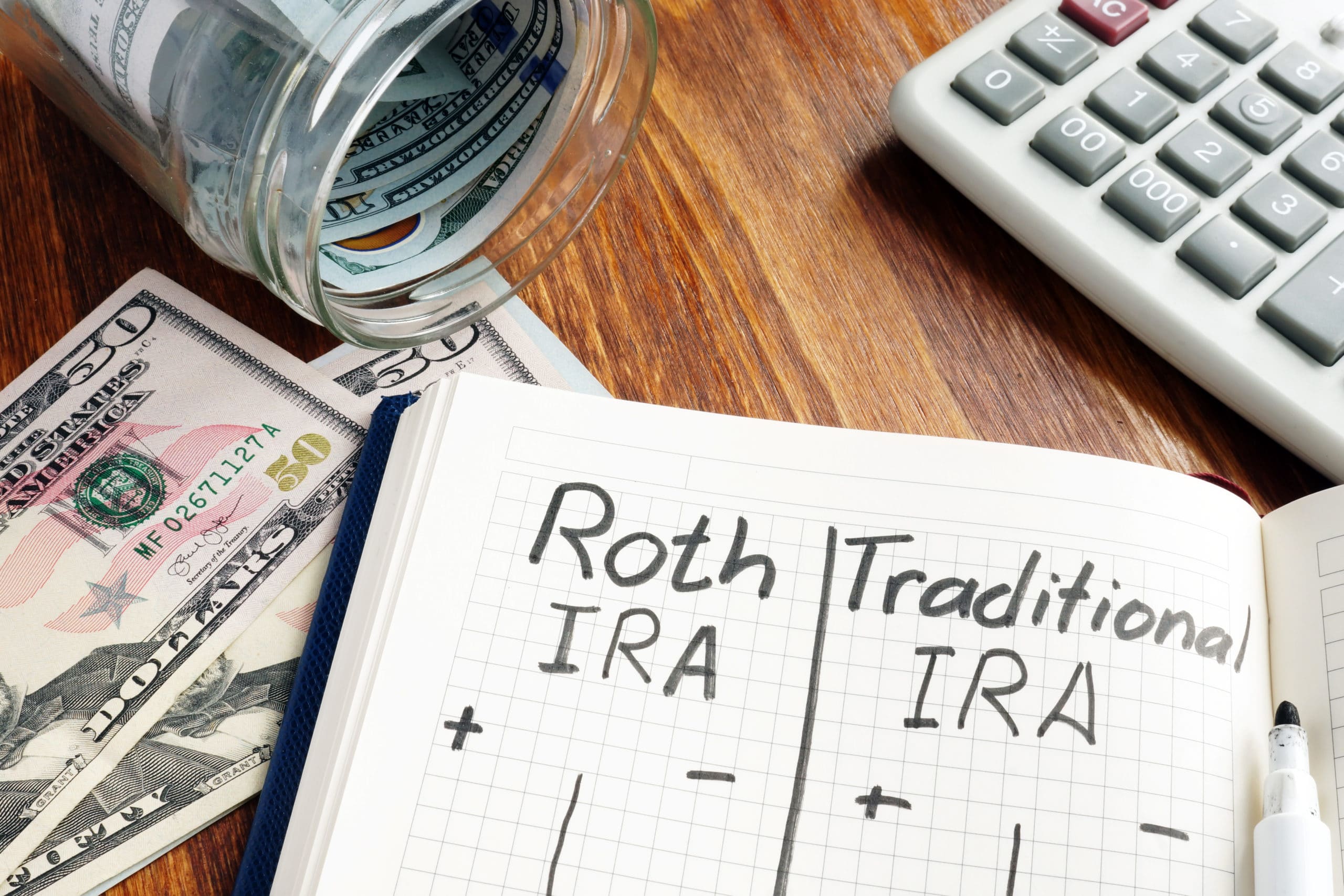Updated with 2023 contribution limits
Most people are familiar with the idea of an IRA – or individual retirement account – as a retirement savings vehicle, but did you know that there are actually several types of IRAs available? All IRAs give investors the benefit of a tax-deferred investment account and the option to name a beneficiary. Beyond that, each type has its own advantages for investors and comes with its own eligibility requirements. Below is an introduction to IRAs and how they might work for you.
Traditional IRA
The traditional IRA is the most common type of individual retirement account. Participants can contribute up to $6,500 per year in 2023 and $7,000 in 2024 (unless they are over 50, in which case that number goes up to $7,500 and $8,000 per year respectively), but contributions can be tax deductible if you don’t have a retirement account at work or if you are under a certain tax bracket.
In the case where contributions were tax deductible, distributions or withdrawals are taxed as traditional income. Any withdrawal prior to age 59 ½ may be subject to early withdrawal penalties. Additionally, you must begin taking required minimum withdrawals from your IRA by April 1 of the year following the year in which you turn 70 ½.
Roth IRA
Roth IRAs are similar to traditional IRAs in that they have a $6,500/year* contribution limit in 2023 and a $7,000/year limit in 2024 (or $7,500/year and $8,000/year respectively for those over 50), but the main difference is that contributions to your Roth IRA are not tax deductible and there are income limits for participation in a Roth IRA. This means that qualified withdrawals will not be taxed because this money has already been taxed. Like the traditional IRA, any withdrawals made prior to age 59 ½ may be subject to early withdrawal penalties, but unlike the traditional IRA, you are not required to take distributions from a Roth IRA at any age.
Rollover IRA
IRAs can be a good option for people who are changing jobs and do not want to or are unable to re-invest their previous retirement savings into their new employer plan. This also allows you to avoid tax on your distribution and early withdrawal fees while still compounding your investment.
A few things to note about rollover IRAs:
- You are only able to rollover retirement savings to IRA plans once in a twelve month period.
- You cannot roll over a distribution from a qualified retirement savings plan (like a 401K) directly into a Roth IRA. For this you would need to roll over into a traditional IRA and convert to a Roth IRA which would have its own tax implications.
Spousal Roth IRA
While Roth IRAs require an investor to be earning income to contribute, the Spousal Roth IRA creates an opportunity for some married couples to increase their contributions if both partners are not working. In the case of a Spousal Roth IRA, the couple must be married and file jointly; this allows a nonworking partner to contribute to their Roth IRA because the other partner is working. The account can be funded with money from either spouse but, must be opened in the nonworking spouse’s name. Contribution limits are the same as for a traditional or Roth IRA.
SEP IRA
The SEP in SEP IRA stands for simplified employee pension and is a type of traditional IRA geared towards small business owners or self-employed people. Similar to traditional IRAs, contributions are tax deductible and investments grow tax deferred until retirement. Current limits for contributions are 25% of compensation or $66,000/year in 2023 and $69,000/year in 2024. There is no catch-up contribution for SEP IRAs at age 50+ and minimum required distributions start at age 72.
Simple IRA
The SIMPLE IRA (SIMPLE stands for Savings Incentive Match Plan for Employees) is an IRA built for small businesses with fewer than 100 employees. It is similar to a 401k, but contributions limits are lower. And like a traditional IRA, the SIMPLE IRA contributions are tax deductible and investments grow tax-deferred. Contribution limits are $15,500/year in 2023 and $16,000/year in 2024 with an additional $3,500 catch-up for those over 50. Employer contributions are mandatory for the SIMPLE IRA – employers must match employee contributions at 3% or put in 2% of the employee’s salary each year, even if the employee does not contribute.
As you can see, there are many types of IRAs – there is likely an option to help support your retirement savings. Consider consulting your financial planner to discuss how an independent retirement account might augment your current plans and be sure to verify all tax deductions and contribution limits with your tax advisor.

